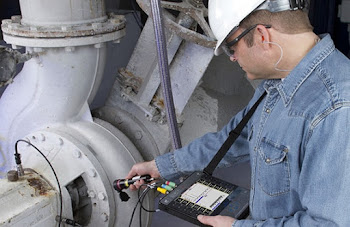A Comprehensive Guide on SAP Material Management |Gems Training and Consultancy
Gems training and consultancy provides training for SAP Material Management. SAP Material Management is a critical component of SAP ERP software, which helps organizations manage their procurement and inventory functions. The module enables businesses to streamline their procurement processes, from the creation of purchase orders to the receipt of goods and payment to vendors. It also provides a comprehensive view of inventory levels, allowing companies to optimize their inventory levels and reduce costs.
One of the key benefits of SAP Material
Management is its ability to integrate with other SAP modules, such as Sales
and Distribution, Production Planning, and Financial Accounting. This
integration ensures that data is consistent across the organization and that
processes are streamlined, reducing the risk of errors and delays.
Additionally, the module provides real-time visibility into inventory levels,
enabling businesses to make informed decisions about purchasing and production.
Overall, SAP Material Management is a
powerful tool that can help organizations optimize their procurement and
inventory functions. By providing a comprehensive view of inventory levels,
integrating with other SAP modules, and streamlining processes, the module can
help businesses reduce costs, improve efficiency, and make better-informed
decisions.
Overview of SAP Material Management
SAP Material Management (MM) is a module
that is part of the SAP ERP system. It is designed to manage the procurement
and inventory functions of an organization. The module is highly integrated
with other SAP modules, including Sales and Distribution (SD), Production
Planning (PP), and Finance and Controlling (FI/CO).
Core Functions
SAP MM provides a range of core functions
that enable an organization to manage its procurement and inventory processes.
These functions include:
- Purchasing: SAP MM enables an organization to manage its
procurement process, from creating purchase requisitions to processing
purchase orders and managing vendor relationships.
- Inventory Management: SAP MM provides a range of tools to
manage inventory, including stock levels, goods receipt, and goods issue.
- Material Valuation: SAP MM enables an organization to value its
inventory based on a range of factors, including the cost of goods sold,
inventory levels, and depreciation.
Integration with Other Modules
SAP MM is highly integrated with other SAP
modules, including Sales and Distribution (SD), Production Planning (PP), and
Finance and Controlling (FI/CO). This integration enables an organization to
manage its procurement and inventory processes in a seamless and efficient
manner.
For example, SAP MM can be integrated with
SD to enable an organization to manage its sales orders and purchase orders in
a single system. Similarly, SAP MM can be integrated with PP to enable an
organization to manage its production planning and procurement processes in a
single system.
In conclusion, SAP MM is a powerful module
that enables an organization to manage its procurement and inventory processes
in a seamless and efficient manner. With its core functions and integration
with other SAP modules, SAP MM is a valuable tool for any organization looking
to streamline its operations and improve its bottom line.
Operational Processes in SAP MM
Procurement Cycle
SAP Material Management (MM) module offers
a robust procurement cycle that covers various activities such as purchase
requisition, request for quotation, purchase order, and goods receipt. The
procurement cycle starts with the creation of a purchase requisition, which is
a request for goods or services. The purchase requisition is then sent to the
purchasing department, which sources the goods or services from vendors.
Once the vendor is selected, a request for
quotation is sent, and the vendor provides a quotation. Based on the quotation,
a purchase order is created, which is a legally binding agreement between the
buyer and the vendor. Finally, when the goods are received, a goods receipt is
created, which confirms the receipt of the goods.
Inventory Management
SAP MM also provides robust inventory
management features that enable organizations to manage their inventory
efficiently. The inventory management process starts with the creation of a
material master record, which contains all the information about the material,
such as its description, stock level, and storage location.
Once the material master record is created,
the material can be moved between storage locations, and inventory levels can
be tracked. SAP MM also allows organizations to perform physical inventory
counts, which help to ensure that the inventory levels in the system match the
actual inventory levels.
Invoice Verification
SAP MM also provides invoice verification
functionality, which enables organizations to verify the accuracy of vendor
invoices. The invoice verification process starts with the receipt of the
goods, which triggers the creation of a goods receipt document.
Once the invoice is received, it is matched
against the goods receipt document, and any discrepancies are identified and
resolved. Once the invoice is verified, it is posted to the accounting system
for payment.
Conclusion:
In conclusion, SAP MM offers robust
operational processes that enable organizations to manage their procurement,
inventory, and invoice verification processes efficiently. With its
comprehensive features and functionalities, SAP MM is a valuable tool for
organizations looking to streamline their supply chain processes.
Overall our integrated SAP material
management is one of the comprehensive training program we offer. We are one of
the leading provider of the high quality SAP material management program. Gems
training and consultancy has come with the comprehensive guide for every
aspiring student. To know more visit our website Gemstnc.
.jpeg)


Comments
Post a Comment